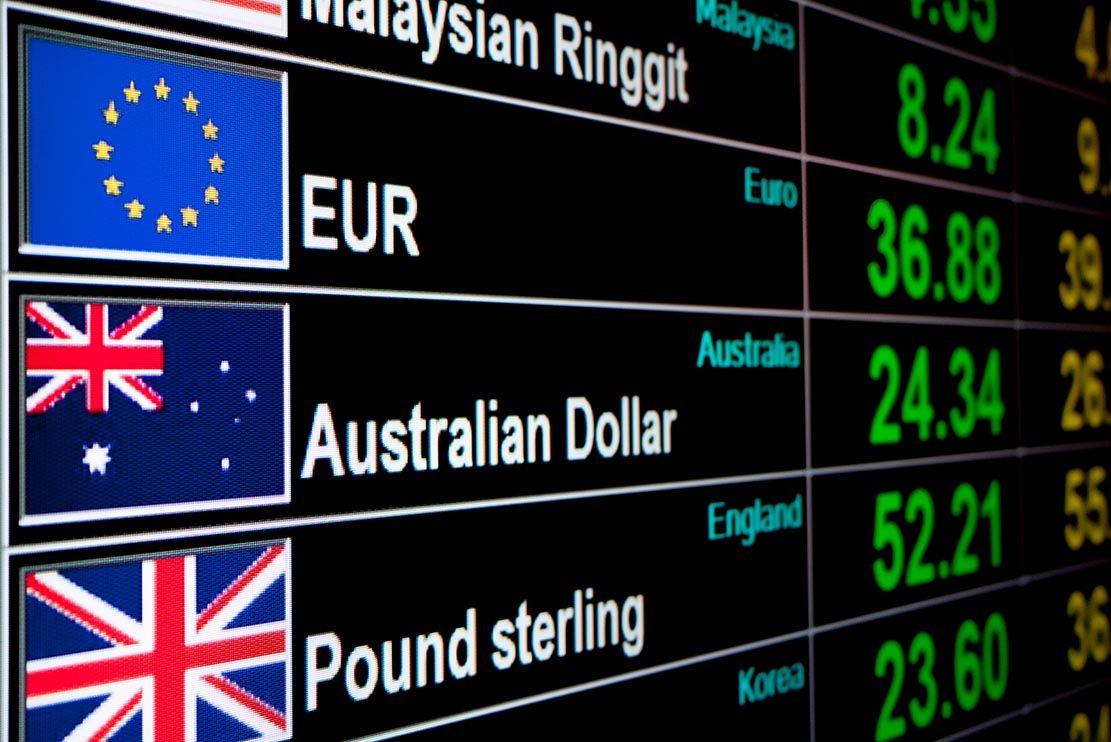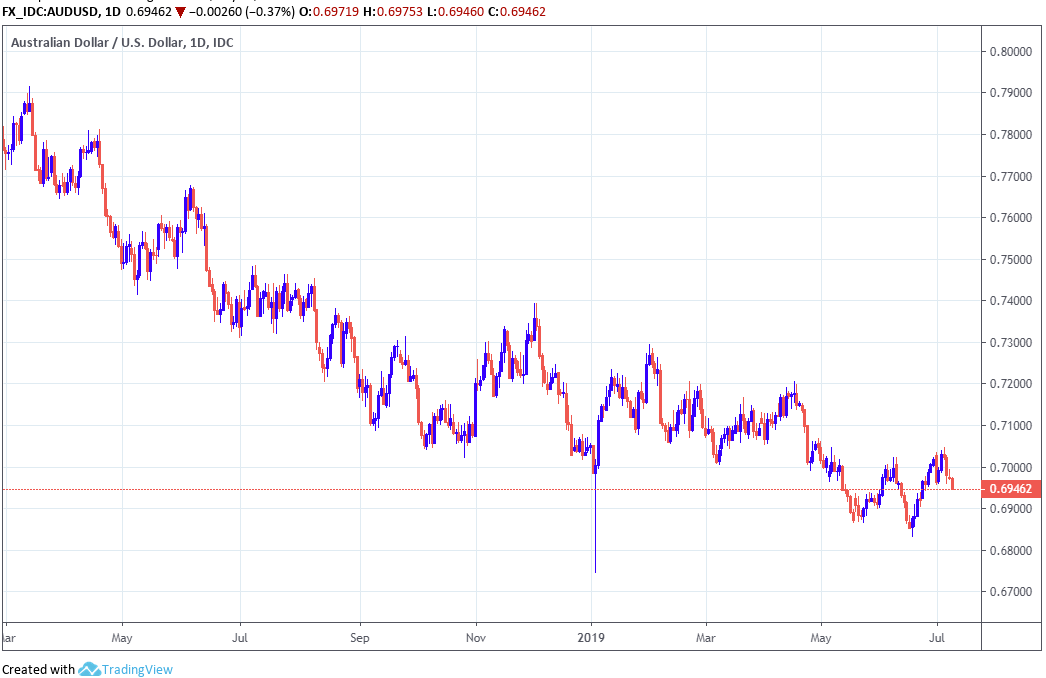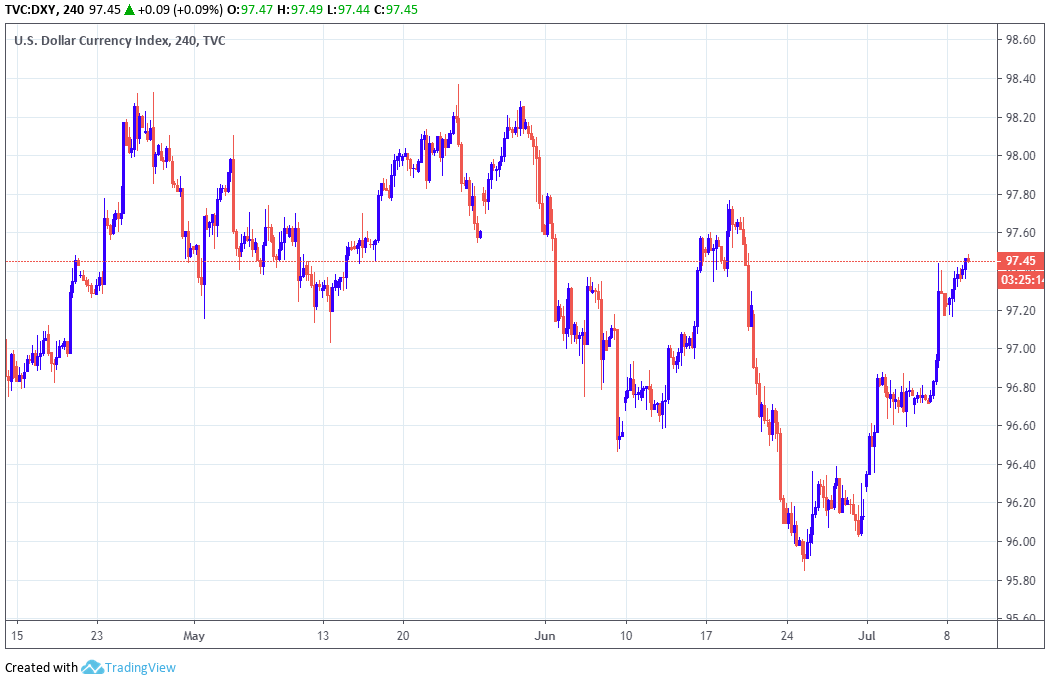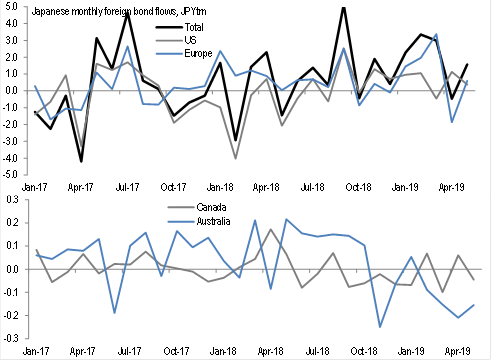Australian Dollar Tipped to Prevail in Fight for Key Level this Week
- Written by: James Skinner

Image © Adobe Stock
- CBA eyes AUD consolidation above key level this week.
- But MUFG eyes USD rebound that could threaten AUD.
- RBC notes Japan selling AU amid loss of “yield” status.
- Soc Gen says AUD a decent bet as Fed starts to cut.
The Australian Dollar was on the defensive at the beginning of the new week but is tipped by analysts at Commonwealth Bank of Australia (CBA) to prevail in its ongoing scrap for a key level over the coming days.
Australia’s Dollar ceded ground to a resurgent U.S. greenback Monday, while keeping a lid on a beleaguered Pound Sterling, but it's expected to reclaim and consolidate above the 0.70 handle in the latter part of the week. That threshold has been described by Societe Generale as a “line in the sand” for the Aussie.
The Aussie retreated further during the overnight session and into Tuesday after the National Australia Bank (NAB) business confidence index was shown falling during the month of June, with the bank saying that all industries have lost momentum in recent months.
“USD will remain well supported in the early pa rt of this week because of Friday’s US employment report in our view. However, we expect the USD to ease as the week progresses,” says Joseph Capurso, a strategist at Commonwealth Bank of Australia. “AUD/USD will consolidate above 0.7000 this week if the USD weakens as we expect. Commodity prices are very supportive for AUD/USD, particularly iron ore prices.”

Above: AUD/USD rate shown at daily intervals.
The U.S. Dollar came into the new week on its front foot after official data showed on Friday, the U.S. economy creating jobs at a healthy clip in June, allaying fears about a possible turn in the market that had spread when the number of new roles created by the economy in May fell to just 75k.
Friday's numbers have now seen markets grow doubtful of whether the Federal Reserve (Fed) will really be as panicked about the outlook for the economy as some thought it would be when rate setters meet at the end of the month, which has lifted the U.S. Dollar.
“Wednesday’s release of the minutes to the FOMC’s June meeting, and FOMC chair Powell’s testimony to Congress, could move the USD significantly. Market participants will be looking for the FOMC’s view on the risks facing the US economy,” Capurso says.
CBA has forecast the Aussie to embark on a gentle upward climb to 0.72 against its U.S. rival into year-end as the Federal Reserve begins to cut its interest rate, although it's looking for the greenback to begin losing ground as soon as this week. But not everybody is on the same page.
"It provides further confirmation that the recent attempted break lower for the dollar index below the 200-day moving average was another false signal," says Lee Hardman, a currency analyst at MUFG. "While one should never put too much emphasis on just a single NFP report, it has understandably dampened expectations for Fed rate cuts."
MUFG's Hardman says the greenback is now threatening to rebound from June's losses. He forecasts the Aussie to finish 2019 at 0.71, although he says it'll struggle to advance beyond its current 0.6950 level until after the end of September.

Above: Dollar Index shown at 4-hour intervals.
The AUD/USD rate was quoted 0.29% lower at 0.6951 during early trading Tuesday and is now down 1.4% for 2019, while the Pound-to-Australian-Dollar rate was 0.04% higher at 1.7977 but has fallen 0.78% this year.
"If the Fed does not agree with the market pricing of a 25 basis point rate cut this month, then Fed Chair Powell has the opportunity to dampen those expectations this week delivers the semi-annual testimony before Congress," Hardman writes, in a Monday note to clients. "Any indication that Fed rate cuts could be delayed until September would pour fuel on the US dollar rebound."
Speculation about Federal Reserve rate cuts comes with the Reserve Bank of Australia (RBA) cash rate has been cut to a fresh record low twice this year, and as markets are betting that one more reduction in Australia's benchmark borrowing cost will come before year-end.
With those cuts in the bag interest rates in Australia are now 1.5% lower than the 2.5% Fed Funds rate in America, which has seen investors dump Australian assets and the Aussie Dollar in their droves during recent months.
If the U.S. Fed cuts rates at its 31 July meeting then the gap between borrowing costs in Australia and North America will narrow and could support the Aussie, but if it doesn't then the Antipodean currency could struggle.

Above: RBC Capital Markets graph showing Japanese investment flows into G10 countries.
"Japanese investors were again large net sellers of Australian bonds (JPY155bn; blue line in second panel above). Japanese investors – typically large buyers of AU bonds – have been net sellers in six of the last seven months. This is consistent with Australia no longer qualifying as a high yielder (it is now the median yielder in developed markets)," says Adam Cole, chief currency strategist at RBC Capital Markets.
RBC has flagged that Japanese investors were again sellers of Australian bonds during April, which was before the RBA's first interest rate cut. Those outflows will have helped pressure the Aussie during the early months of the year but could turn on their heads if U.S. interest rates also fall notably later in the year.
This is to some extent what the team at Societe Generale are telling clients could happen over the coming months. They recommended buying the Aussie at .7020 last Thursday and are targeting a move up to 0.73 over the coming weeks and months, but they also say the trade would be best cancelled if the market fall below 0.6950.
"The RBA is just about finished while the Fed is about to start. Since the start of 2018, the AUD/USD fell with 10y relative yields, which have probably bottomed out. Trade tensions maintained the AUD/USD below 70 cents. But the softer CNH skew and Chinese equity reflect post G20 relief, while the AUD just emerged above its line in the sand. AUD shorts have piled up since the start of the year, raising the risk of short-covering,” says Kit Juckes, chief FX strategist at Societe Generale.
Time to move your money? Get 3-5% more currency than your bank would offer by using the services of foreign exchange specialists at RationalFX. A specialist broker can deliver you an exchange rate closer to the real market rate, thereby saving you substantial quantities of currency. Find out more here.
* Advertisement




